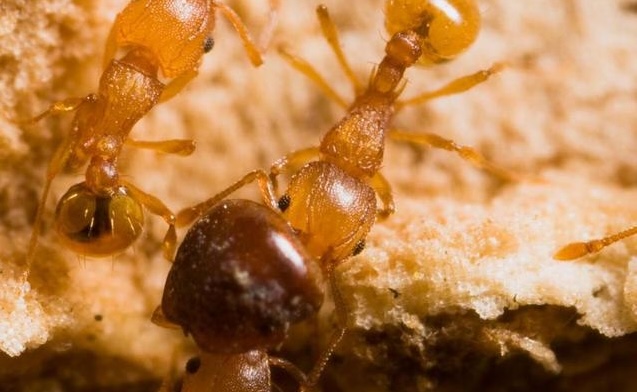
3 Economic Impacts of Fire Ants
A fire ant colony can have thousands of worker ants along with a single queen or even multiple queens. As a fire ant queen does not forage for food, it relies on the worker ants for colony maintenance and stability. These fire ants work to maintain their colony, all working for the queen, the true source of the colony. Fire ants can severely impact operations, affecting both productivity and safety. But that’s only the beginning. When fire ants are left to proliferate, it has a severe economic impact on your bottom line. Choosing the right solution is crucial for effectively managing these pests.
Central Life Sciences offers specialized products designed to control fire ant populations along with the queen. Let’s take a look at just a few of the ways fire ants can impact the productivity of your operation, the possible affect to your bottom line, along with the best control solutions available.
How Fire Ants Impact Your Bottom Line
Here are three critical reasons why focusing on the queen is the most effective strategy for fire ant control:
- Crop and Land Damage: Fire ants can cause significant damage to crops and landscape. In almond groves and citrus orchards, they can damage the roots and diminish the yield of trees, affecting overall productivity. On golf courses and pastures, their mounds can damage equipment and create hazardous conditions for both humans and livestock, leading to increased maintenance costs.
- Infrastructure Damage: Fire ants can damage critical infrastructure by nesting in electrical equipment, irrigation systems, and machinery. Their nesting habits can cause short circuits, equipment malfunctions, and water system failures, leading to costly repairs and downtime for operations. They also build tall, hardened mounds that can damage existing infrastructure.
- Reduced Safety and Productivity: Fire ants pose a risk to employee and patron safety, as their painful stings can cause allergic reactions and disrupt daily activities. This can lead to reduced productivity, as workers may need time off to recover, and additional resources may be needed to ensure a safe working environment.
Each of these byproducts of damaging fire ants can have a severe impact on your bottom line. By applying Extinguish® Professional Fire Ant Bait or Extinguish® Plus, you can cut off nuisance fire ant populations at the source, the queen. Let’s take a look at the differences between Extinguish® Professional Fire Ant Bait and Extinguish® Plus, so that you can decide which is the best fit for your operation:
Extinguish® Professional Fire Ant Bait
- Extinguish® Professional Fire Ant Bait contains (S)-methoprene, an Insect Growth Regulator (IGR) that affects a fire ant queen's reproductive abilities.
- As existing workers die naturally, they are not replaced by a new generation. The queen eventually starves to death and the entire colony is eliminated.
- Colony reduction can be seen beginning at 3 weeks and colony elimination can be seen within 6-8 weeks.
- Extinguish® Professional Fire Ant Bait is also noteworthy for its environmental profile. This IGR-based bait can be used with confidence around people, livestock, pets, and even other beneficial ant species.
Extinguish® Plus Fire Ant Bait
- Extinguish® Plus combines an adulticide with the long-lasting control of an IGR, providing a two-way action against fire ant colonies.
- The IGR sterilizes the queen and prevents rebound, while the adulticide kills problem worker ants.
- Colony reduction begins within a week, and colony elimination may be seen within two weeks.
- Extinguish® Plus offers a comprehensive solution by targeting both adult ants and their reproductive cycle.
For more detailed information on achieving optimal results, visit our application pages for Extinguish® Professional Fire Ant Bait and Extinguish® Plus.